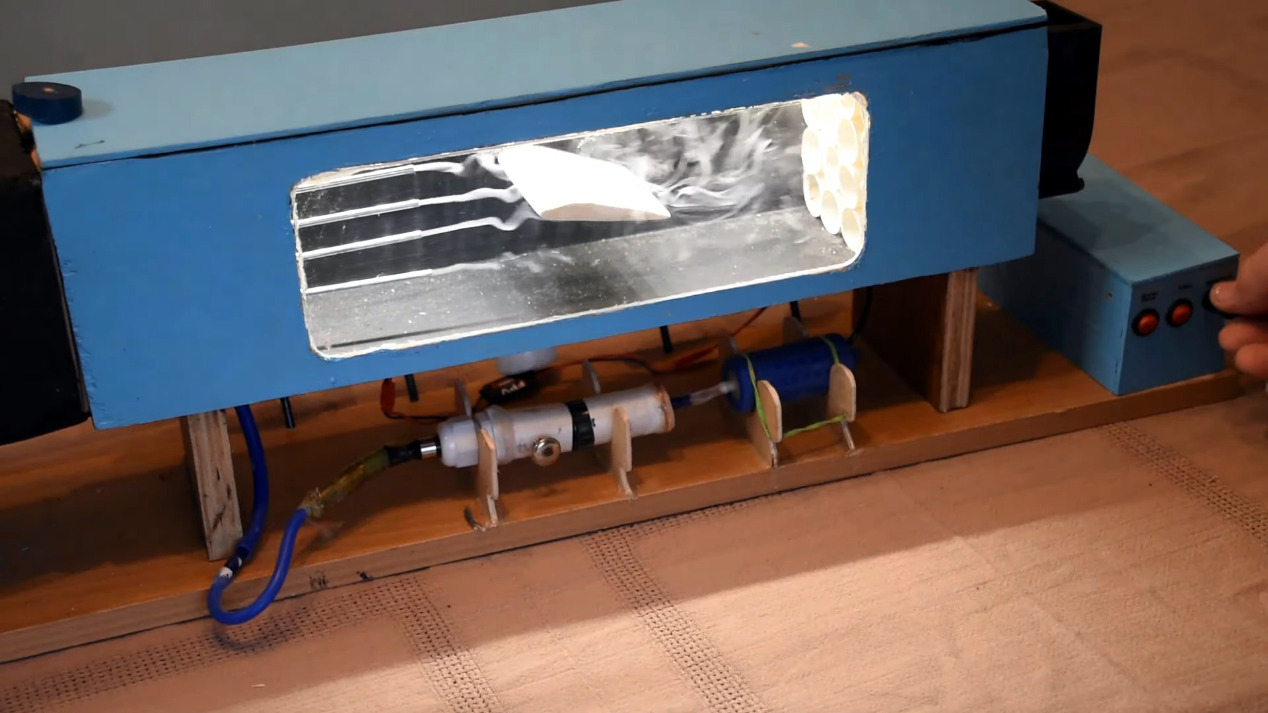
Computer simulation is indispensable in validating design and used in every aspect of engineering from finite element analysis to traffic simulation to fluid dynamics. Simulations do an amazing job and at a fraction of the time and expense of building and testing a scale model. But those visceral ah-ha moments, and some real-world gremlins, can be easier to uncover by the real thing. Now you don’t need a university research or megacorp lab to run aerodynamic study IRL, you can just build a functional desktop wind tunnel for a pittance.
[Mark Waller] shows off this tidy little design that takes up only about two feet of desk space, and includes the core features that make a wind tunnel useful. Air is pulled through the tunnel using a fan mounted at the exhaust side of the tunnel. The intake is the horn-like scoop, and he’s stacked up a matrix of drinking straws there to help ensure laminar flow of the air as it enters the tunnel. (The straw trick is frequently used with laminar flow water fountains). It also passes through a matrix of tubes about the diameter of a finger at the exhaust to prevent the spin of the fan from introducing a vortex into the flow.
For analysis, five tubes pipe in smoke from an vape pen, driven into the chamber by an aquarium pump. There’s a strip of LEDs along the roof of the tunnel, with a baffle to prevent the light shining on the black rear wall of the chamber for the best possible contrast. The slow-motion video after the break shows the effectiveness of the setup.
Whether you’re a Hackaday Editor cutting their own glider wing profiles using foam and hot wire, or just want to wrap your head around how different profiles perform, this will get you there. And it’ll do it at a fraction of the size that we’ve seen in previous wind tunnel builds.
[via r/engineering]

Recent Comments